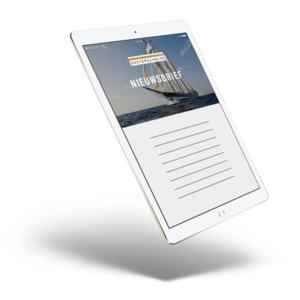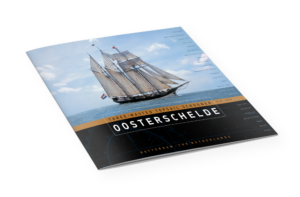17 Nov The ship's watches
The ship's watches
17 November 2013
Leo Boersen reports:
“We entered the third week of our trip and yesterday we changed the watches for the second time. The red watch started on 31st October with the middle watch (00:00-04:00) and the afternoon watch (12:00-16:00). After a week everyone shifted one watch, so the red watch got the morning watch (04:00-08:00) and the dog watch (16:00–20:00). After yesterday’s change red has the forenoonwatch (08:00-12:00) and first watch (20:00-24:00). In a weeks time the red watch will start with the middle watch again, so everyone –red, white and blue watch– will have done all the different times.
For the permanent crew it is a bit different, they don’t shift their watches and work 2 hours more in daytime outside the their watch.
In this way everyone on board has light (morning watch), easy (afternoon watch) and hard (middle watch) watches and is up in day time as well as night time. Meal times are 7:30 breakfast, 13:30 lunch and 19:30 dinner, each announced by a couple of strikes of the ship’s bell in the saloon. The watch helps the cook with the meal that is in their watch; the sticky-mats and cuttlery are put on the tables as are jugs with water and glasses, they make tea and coffee, bring the delicious things that cook Job has prepared to the tables. The dishes are done and everything gets put back in its place.
Everyone –voyage and permanent crew– has found their way and everything goes smooth and easy.
After lunch the saloon turns into a study and library. If people are not in their bunks to rest after the work on deck, you can see them sitting buried in books of all sorts. Maritime books, especially those on the Pacific and Cape Horn are most popular. So much has been read, debated and talked about these two subjects that there is a call for new subjects. Than at 16:30 there is a daily activity. It starts with a weather update, where the detailed weather charts from Meteo Consult are explained. Then we have nautical workshops, guest lectures, films –today part 2 of ‘Longitude’ with Michael Gambon and Jeremy Irons- or steering instructions by first mate ‘Woody’ van Grondelle in private 15 minute sessions: “Don’t touch the helm too much. The ‘Oosterschelde’ will find her way”, was his catching advice. All of us have the tendency to keep staring at the compass and with every deviation of the set course give helm to counteract. Don’t. Give the old lady time to get back on track, which she almost always does. An excellent excercise in patience for the hastened western people, who think that everything he/she wants, has to happen immediately.
The conversations that we mentioned in the last report, mostly happen during the watch. All this talking makes the time fly. All have their story and all are equal on board. Everyone has troubles with the moving ship, everyone experiences the endless ocean, changing winds, drizzle and cold –at night 5 to 6 Celsius, daytime about 10– and everyone who is on helm watches the ship run away off course, sometimes up to 20 degrees when a big roller of the mighty Pacific swell grabs her. Everyone has an uneasy sleep when the swell rocks the ‘Oosterschelde’ endlessly. Every watch has put the ‘Breefok’ (a tremendous but somewhat unmanageable sail, which due to Labor Regulations cannot be hoisted, so will be set only outside of territorial waters, after making sure by radar there are no union officials around) up or take it down one or more times and every watch has experienced what other sails the ‘Oosterschelde’ can set.
After many days over starboard, we are now sailng over port. The only thing that is righteous is the sea. The sea is the cause of each and every thing. She decides who has the comfort of sleeping on the lee side of the ship and when it is time to change that.
The sea also gives discrete signals to those who sail her; so stay alert. The two Leo’s on board -Leo and Leonard, to be exact– have both suffered minor injuries while working on the Breefok caused by a sudden roll of the ship. Leo and Breefok do not seem to go together very well.
Why suddenly there are dozens of petrels flying around the ship for an hour, nobody can explain. Apparently that got the attention of a couple of Shy albatrosses, who joined the petrels. The spectacle was completed by the likewise arrival of a dozen Hourglass dolphins. Everyone was on deck taking pictures or filming. Effortlessly the black and white dolphins shoot through the water, showing up on port, then on starboard. Jumping up and swimming in close formation. Than suddenly, as by an unheard command, they all dissappear as quickly as the scene had started.
The Pacific; never a dull moment.”





